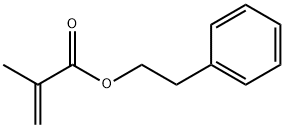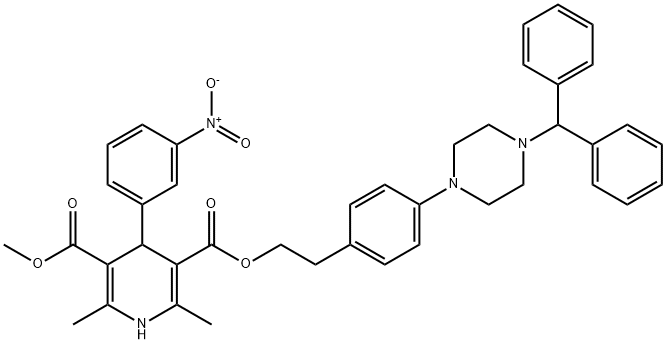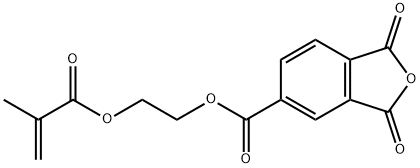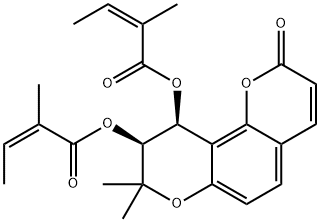2-PHENYLETHYL METHACRYLATE
- CAS NO.:3683-12-3
- Empirical Formula: C12H14O2
- Molecular Weight: 190.24
- MDL number: MFCD00038232
- EINECS: 222-969-0
- SAFETY DATA SHEET (SDS)
- Update Date: 2024-12-18 13:37:16

What is 2-PHENYLETHYL METHACRYLATE?
The Uses of 2-PHENYLETHYL METHACRYLATE
2-Phenylethyl methacrylate finds use in perfume compositions, including soap perfumeswhere it may lend warmth and pleasant “dried-leaf” notes to a Rose or an Oriental type fragrance. It blends well with the Methylionones, Cedarwood products, Jasmin materials, Sandalwood notes, etc. and it can be used in relatively large amounts.
Synthesis
2-Phenylethyl methacrylate is prepared by azeotropic esterification of Phenylethylalcohol with 2-Methylpropenoic acid.
Properties of 2-PHENYLETHYL METHACRYLATE
| Melting point: | 119~120℃/11mm |
| Boiling point: | 119-120°C 11mm |
| Density | 0,976 g/cm3 |
| refractive index | 1.4970 (estimate) |
| Flash point: | 158℃ |
| form | clear liquid |
| color | Colorless to Light yellow |
| CAS DataBase Reference | 3683-12-3 |
| EPA Substance Registry System | 2-Phenylethyl methacrylate (3683-12-3) |
Safety information for 2-PHENYLETHYL METHACRYLATE
Computed Descriptors for 2-PHENYLETHYL METHACRYLATE
New Products
(S)-3-Aminobutanenitrile hydrochloride 4-Methylphenylacetic acid N-Boc-D-alaninol N-BOC-D/L-ALANINOL Tert-butyl bis(2-chloroethyl)carbamate 3-Morpholino-1-(4-nitrophenyl)-5,6-dihydropyridin- 2(1H)-one Furan-2,5-Dicarboxylic Acid Tropic acid 1-Bromo-3,5-Di-Tert-Butylbenzene S-2-CHLORO PROPIONIC ACID ETHYL ISOCYANOACETATE 2-Bromo-1,3-Bis(Dimethylamino)Trimethinium Hexafluorophosphate 4-IODO BENZOIC ACID 3-NITRO-2-METHYL ANILINE 1-(2,4-DICHLOROPHENYL) ETHANAMINE (2-Hydroxyphenyl)acetonitrile 4-Bromopyrazole 2-(Cyanocyclohexyl)acetic acid 4-methoxy-3,5-dinitropyridine 1-(4-(aminomethyl)benzyl)urea hydrochloride 2-aminopropyl benzoate hydrochloride diethyl 2-(2-((tertbutoxycarbonyl)amino) ethyl)malonate tert-butyl 4- (ureidomethyl)benzylcarbamate Ethyl-2-chloro((4-methoxyphenyl)hydrazono)acetateRelated products of tetrahydrofuran



![2-[3-(2H-Benzotriazol-2-yl)-4-hydroxyphenyl]ethyl methacrylate](https://img.chemicalbook.in/CAS/GIF/96478-09-0.gif)



![4-HYDROXY-8-PHENYL-3-PROPYL-2H-PYRANO[2,3-D]PYRIDAZINE-2,5(6H)-DIONE](https://img.chemicalbook.in/StructureFile/ChemBookStructure8/GIF/CB2717074.gif)
You may like
-
 2-Phenylethyl Methacrylate (stabilized with HQ) CAS 3683-12-3View Details
2-Phenylethyl Methacrylate (stabilized with HQ) CAS 3683-12-3View Details
3683-12-3 -
 2033-24-1 98%View Details
2033-24-1 98%View Details
2033-24-1 -
 1975-50-4 98%View Details
1975-50-4 98%View Details
1975-50-4 -
 2-HYDROXY BENZYL ALCOHOL 98%View Details
2-HYDROXY BENZYL ALCOHOL 98%View Details
90-01-7 -
 2-Chloro-1,3-Bis(Dimethylamino)Trimethinium Hexafluorophosphate 221615-75-4 98%View Details
2-Chloro-1,3-Bis(Dimethylamino)Trimethinium Hexafluorophosphate 221615-75-4 98%View Details
221615-75-4 -
 61397-56-6 CIS BROMO BENZOATE 98%View Details
61397-56-6 CIS BROMO BENZOATE 98%View Details
61397-56-6 -
 14714-50-2 (2-Hydroxyphenyl)acetonitrile 98+View Details
14714-50-2 (2-Hydroxyphenyl)acetonitrile 98+View Details
14714-50-2 -
 118753-70-1 98+View Details
118753-70-1 98+View Details
118753-70-1
Statement: All products displayed on this website are only used for non medical purposes such as industrial applications or scientific research, and cannot be used for clinical diagnosis or treatment of humans or animals. They are not medicinal or edible.